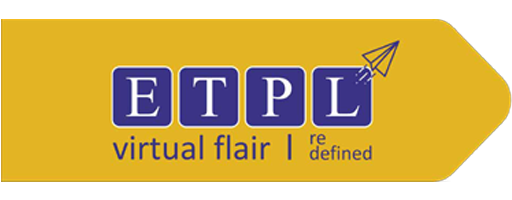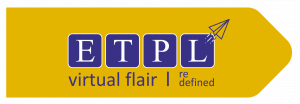Attracting your target audience is the key to the success of any marketing campaign. Marketing experts need to keep an eye out for fresher, more creative approaches to entice people to check out their goods and services. Rich media is the perfect marketing solution for businesses always looking for clever ways to connect with potential customers. Let’s learn about what rich media ads are and how they benefit advertisers as well as publishers.
One of the most important elements determining whether or not the advertisements are gaining exposure and generating ROI for the advertisers is click-through rates (CTR), and rich media ads can be a powerful strategy to increase CTR.
What are Rich Media Ads?
Rich media advertisements, which aim to be more interactive and offer a better user experience, integrate text, images, music, video, and other aspects. They are an effective method of luring customers to the advertiser’s website. These ads are dynamic in design and may adjust to users’ on-screen and device movements. JavaScript and HTML5 are used to build rich media ads so they may float, expand, etc. Like any other banner, the advertisement is integrated into a website. However, there might be a clip playing or some type of more dynamic content present instead of a straightforward animation or static image. The user is enticed to click on the advertisement by the enticing pictures in order to enhance their experience.
Rich Media Benefits for Advertisers
Better CTR
Rich media ads have been shown to have a high CTR.
User Experience Is Excellent with Interactive Ad Formats
Due to its dynamic nature, which engages consumers and improves their user experience, rich media units have a high return on investment.
Rich media ads help you get more data
Rich media advertising makes it feasible to collect more data and insights. Advertisers are able to expand and alter their campaigns to achieve better long-term outcomes when they have a better understanding of what works for their efforts.
Promote brand awareness more effectively
Brands can gain more traction and increase awareness with the use of rich media advertisements. Due to the increasing opportunities for interaction, a wide range of metrics are employed to measure it, and significantly more valuable data is gathered.
Rich Media Benefits for Publishers
No Interruption
Rich media ads don’t interfere with users’ web browsing like static ads do, which redirect users to advertisers’ landing pages.
Measurable
Rich media advertisements’ interactivity enables publishers to monitor more metrics. Greater ROI on their ad budget is seen with more KPIs, including interaction, video views, and brand favorability.
Increases Revenue
Rich media advertising often has a higher CPM than banner ads. Publishers now have the chance to boost their ad revenue as a result.
Rich Media Ad Types
There is a tonne of innovative advertising alternatives available with rich media ads. These really engaging ads differ amongst websites as well. Rich media advertisements can be seen as
- On-page ads – On-page ads are often banners that suit the normal display ad dimensions but may include extra elements like embedded video or a browseable product catalog. They frequently appear in various locations on a web page, such as a banner at the top or a rectangle along the side.
- Out-of-page ads –Out-of-page ads typically refer to pop-up ads, but they can also include expandable ads. These aren’t attached to the website.
- In-stream ads – In-stream ads are shown, primarily on websites like YouTube, before (pre-roll), or during (post-roll) videos.
Rich Media Ad Formats
1. Banner Ads

The most popular and in-demand kind of rich media advertisement is banners. When an ad creative is static, you can refer to it as a banner, whereas when it is dynamic, it is actually a rich media ad. Because they appear above the fold, banner ads have the best chance of being seen. Advertisers have the ability to change a static image banner into a visually stunning motion poster as a rich media banner ad.
2. Interstitial Ads

Rich media ads called interstitials can include banners, videos, and other HTML5-based ad units. The majority of interstitial ads are full-screen and appear at logical transition points. As a viewer scrolls down a web page, interstitial advertising might follow the content or stay in place. Interstitial ads are therefore difficult to overlook due to their screen-wide feature, making them a potential ad style to overcome banner blindness.
3. Expandable Ads

An expandable ad expands in accordance with its position on the website. It is a customized advertisement. When a user action (such as a hover, click, or tap) is detected, an ad on the right side of the page will immediately extend to the left, and vice versa. These ads are therefore the most compelling to watch all the way through, resulting in high CPMs and higher viewability.
4. Pushdown Ads

Pushdown ads don’t expand in size; instead, they appear as a teaser on a webpage and, when clicked, tapped, or hovered over, they push the content down to display a larger ad creative. They receive more views than overlaying ad units since they support a wide range of interesting creatives that don’t cover the content.
5. Native Content Ads

Rich media ads typically take the shape of publisher feed embeds to feel as inconspicuous as possible. This ad is designed to appear as an addition to the feed on the website. Even if you aren’t directly interacting with the advertisement, you could notice that the image grabs your attention or that it responds to your touch.
Want to learn more about other engaging Ads? Click here to explore.
Standard Ads vs. Rich Media Ads
| Standard Ad | Rich Media Ad |
Standard ads are simple. They generally include texts with a visual element such as a logo or a graphic. | Rich Media ads are creative, are audio/video-driven, and rich in overall appearance |
GIF format is the maximum that a standard advertisement will support. | Gameplay elements and tailored videos are enhanced by rich media advertisements. |
The creative size is lesser than 200k | The file size is usually larger than 200k |
| The ad is static, with no interactive elements in it. | The ad is expanding, responsive to user interaction, dynamic by nature, and extremely interactive. |
No other technology can be used with a standard ad as they are not compatible with Java or HTML | Rich media are compatible with technologies like HTML5, Java, and JavaScript. |
Click on the ads by the user will take them to the advertiser’s page. | Click on the ads may lead to expansion, pause, floating, or sound; not necessarily just the advertiser’s landing page. |
The Ad performance is measured only using the click-through rate (CTR) metric. | The Ad performance can be measured with multiple metrics for tracking user engagement. |
Rich media advertisements have been aiming to make advertising fun through their advanced strategies. It is one of the most effective methods for promoting a brand. Its exceptional user engagement, which is a result of its creative and interactive components, aids in increasing call to action, brand exposure, and ROI. With the help of eRGADX, publishers and advertisers may take advantage of the full potential of rich media advertising. Do you want to learn more about it? Contact us now!

